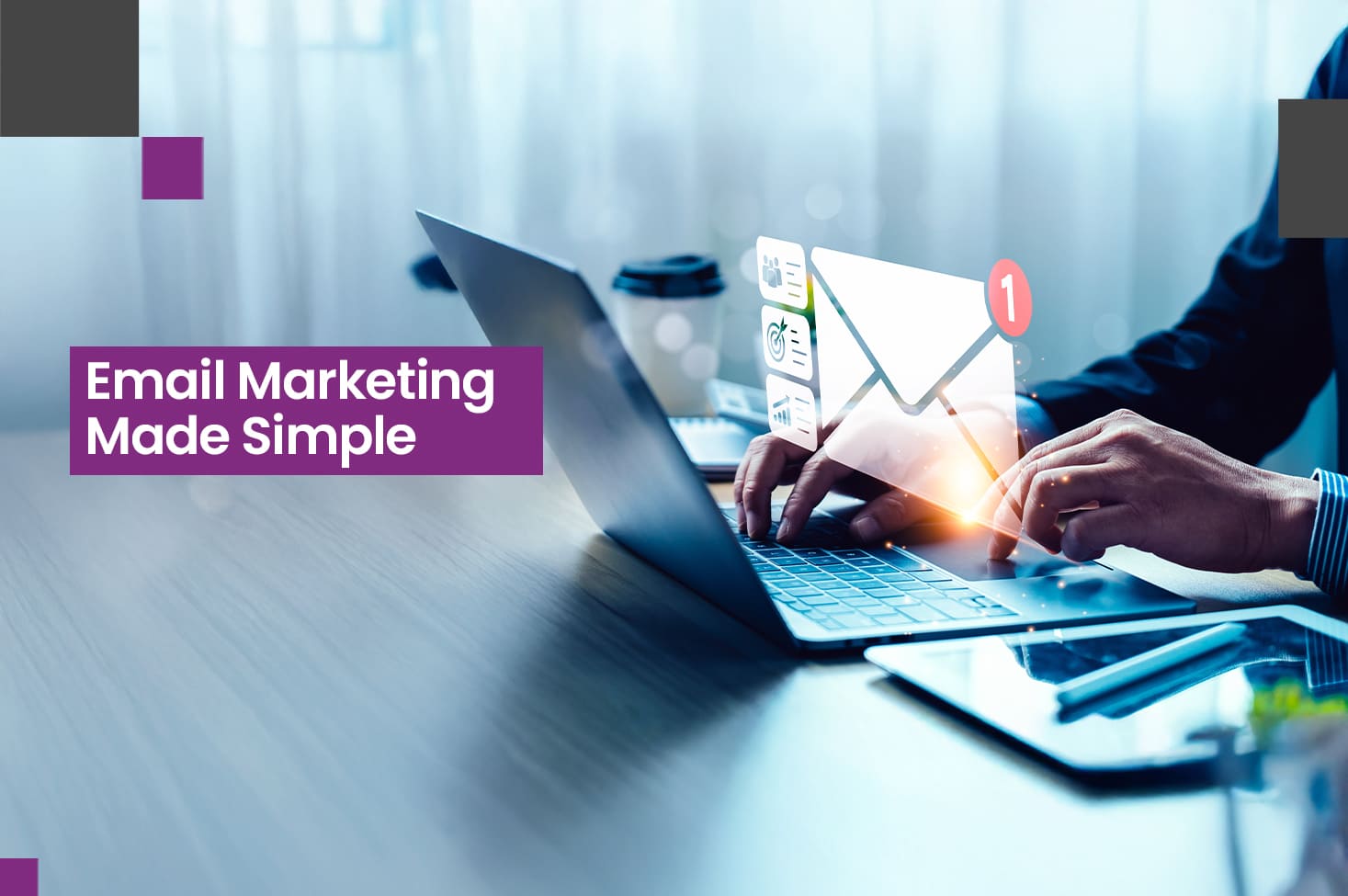
Every day, inboxes overflow, yet a few emails still stand out: a welcome after a purchase, a birthday offer, or a heartfelt thank-you from a trusted brand. That’s thoughtful email marketing.
In 2025, the average email open rate across industries reached 42.35%, showing that people still value personalized communication.
So, what is email marketing, and how is it related to this? It’s the practice of building meaningful, direct connections through the inbox. When driven by creativity, data, and automation, it transforms ordinary updates into memorable experiences.
From timely offers to heartfelt appreciation, every message strengthens trust and loyalty. Keep reading and learn how email marketing is both a strategy and an empathy powerhouse of modern digital marketing.
At its core, email marketing in digital marketing is a targeted communication strategy that connects businesses directly with their customers. Unlike social media or paid ads, it gives brands full control over how, when, and what they share, with no algorithms blocking reach.
It builds trust through consistent, relevant communication across the customer lifecycle. From the first “welcome” to post-purchase follow-ups, email marketing keeps the conversation personal and measurable.
Email advertising is the promotional arm of email marketing, focused on limited-time deals, product launches, and event invitations. Email marketing, on the other hand, nurtures relationships with value-driven content.
Common types of email advertising include:
Even with countless channels available, email marketing in digital marketing keeps outperforming because:
The process begins with capturing leads through signup forms or lead magnets. Once subscribers join your list, they receive tailored content designed to educate, entertain, or persuade, all delivered through scheduled or automated campaigns.
Over time, these consistent, relevant messages guide potential buyers through the sales funnel, turning curiosity into commitment.
Building your list ethically is the foundation. Use:
Want readers to actually click “open”? Mix creativity with clarity:
Automation turns consistency into scale. You can:
Email marketing tools simplify everything, from designing campaigns to managing lists and analyzing performance. They let you send thousands of personalized emails efficiently, ensuring better deliverability and insights.
Great email marketing tools include:
Some reliable names include:
Perfect for beginners and small businesses. Mailchimp offers AI-powered email writing, smart segmentation, and predictive analytics.
It automates campaigns, recommends send times, and provides detailed analytics to improve engagement and conversion.
A full-suite marketing platform for growth-driven brands. HubSpot’s AI Email Writer and Breeze AI suite help craft subject lines, automate workflows, and personalize messages using Customer Relationship Management (CRM) data.
It optimizes send times and offers actionable post-campaign insights.
Formerly Sendinblue, Brevo is ideal for multi-channel outreach. It uses AI to study contact behavior, personalize emails, and optimize send times.
Its AI assistant refines subject lines and content, while flexible pricing suits large lists with low-frequency sends.
Each tool has its strengths, but all help marketers build campaigns that convert.
An effective strategy aligns brand goals with customer needs. Start by defining objectives, from lead nurturing to direct sales, and mapping each goal to a relevant email type.
The secret lies in turning subscribers into customers through relevance, timing, and storytelling.
Every subscriber has unique preferences. By using segmentation and behavioral targeting, marketers can send messages that resonate deeply. Personalization doesn’t just boost clicks, it builds stronger customer loyalty and higher revenue.
Most people check emails on their phones. That means:
The value of email marketing in digital marketing goes far beyond sending newsletters. It enhances customer retention, fuels remarketing, and drives revenue growth without high acquisition costs.
Email marketing is still among the most rewarding digital channels because it blends low cost with high conversion potential. The ROI in email marketing measures how much revenue is earned for every penny spent, and the numbers are consistently impressive.
When campaigns are fuelled by data insights, smart segmentation, and engaging content, brands can see exponential growth over time. It’s about building profitable, lasting relationships through the inbox.
Here’s why email ROI continues to shine:
The real impact of email marketing comes from how it can build genuine, long-term customer loyalty. Every message that informs, helps, or delights adds emotional value beyond a simple transaction. When subscribers consistently receive relevant and meaningful content, they feel seen and valued, and that connection keeps them returning.
Here’s how email marketing drives loyalty:
The true effectiveness of email marketing in digital marketing comes from its simplicity, scalability, and proven returns. Understanding what email advertising is and how it complements engagement-driven campaigns reveals how powerful your inbox can be.
With the right email marketing tools, brands can automate, analyze, and adapt strategies for stronger ROI and sustainable growth. Email remains a trusted space where communication feels personal and measurable.
Keep optimising your content, segmenting your audience, and experimenting with data-backed insights. Done right, every campaign strengthens your brand’s voice and deepens customer loyalty, one click, one conversation, one connection at a time.
It’s a direct communication method where brands use emails to engage customers. By sending tailored messages, they build trust, promote products, and boost conversions efficiently.
Email marketing is an important part of digital communication that nurtures leads and supports customer journeys with measurable engagement, all without relying on third-party algorithms.
Email advertising focuses on promotional campaigns like sales or offers, while email marketing builds long-term customer relationships through educational or value-based content.
Look for drag-and-drop builders, automation, personalization, and analytics features. These tools streamline design, delivery, and performance tracking.
By using segmentation, timing, and personalization, email campaigns deliver value that converts readers into loyal customers, all while maintaining measurable ROI.